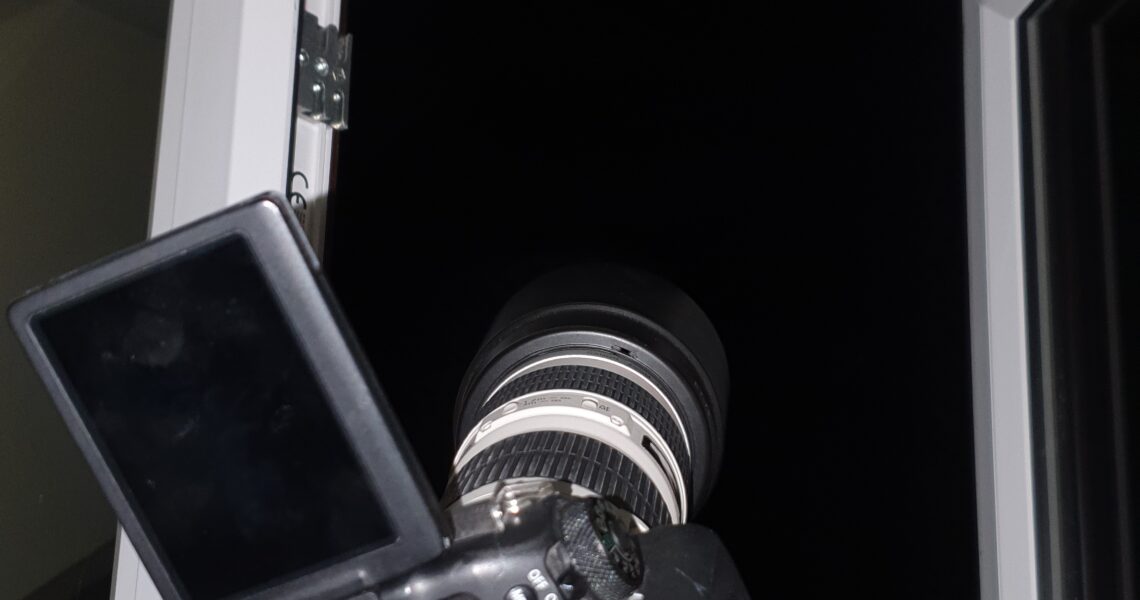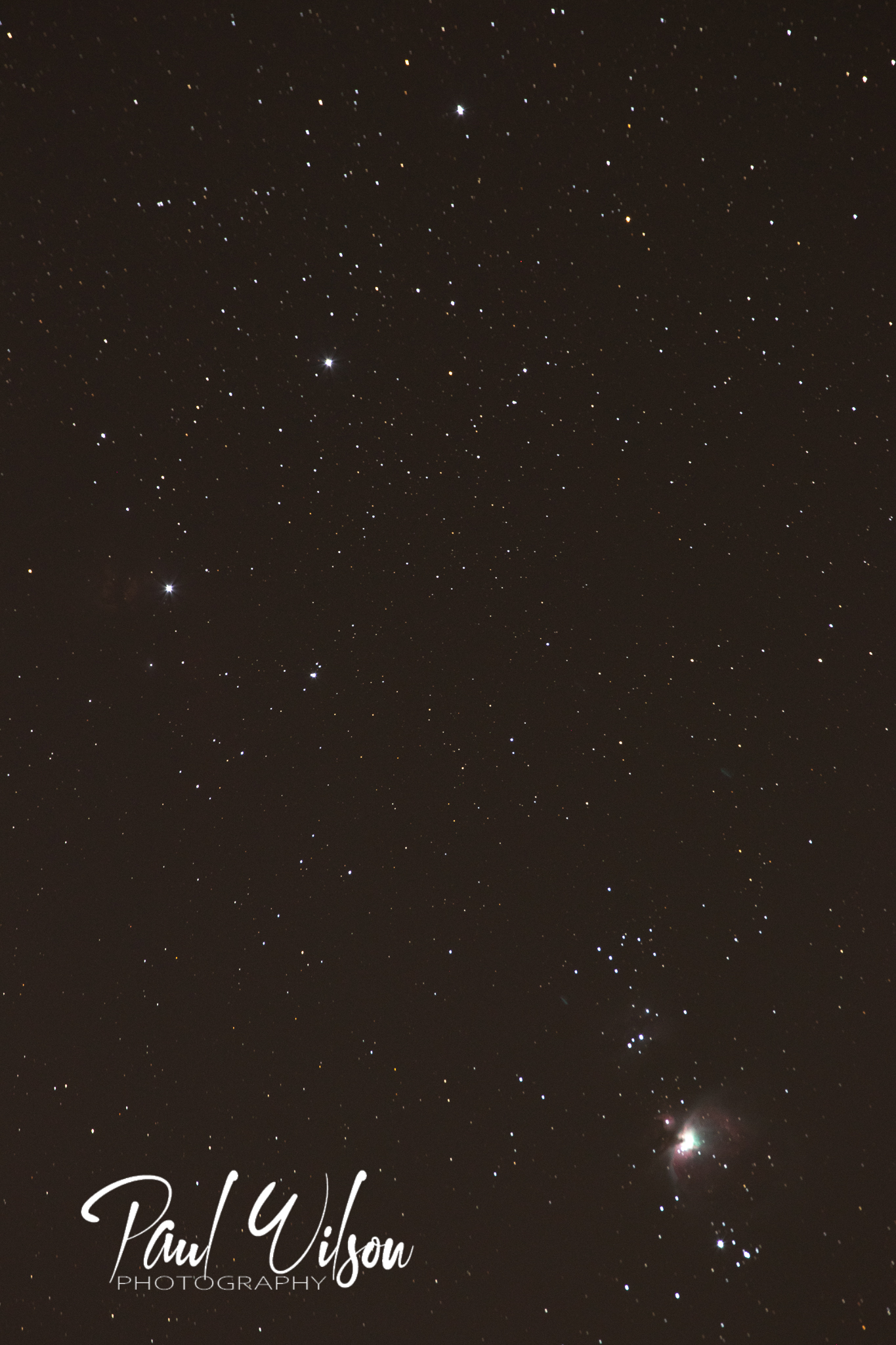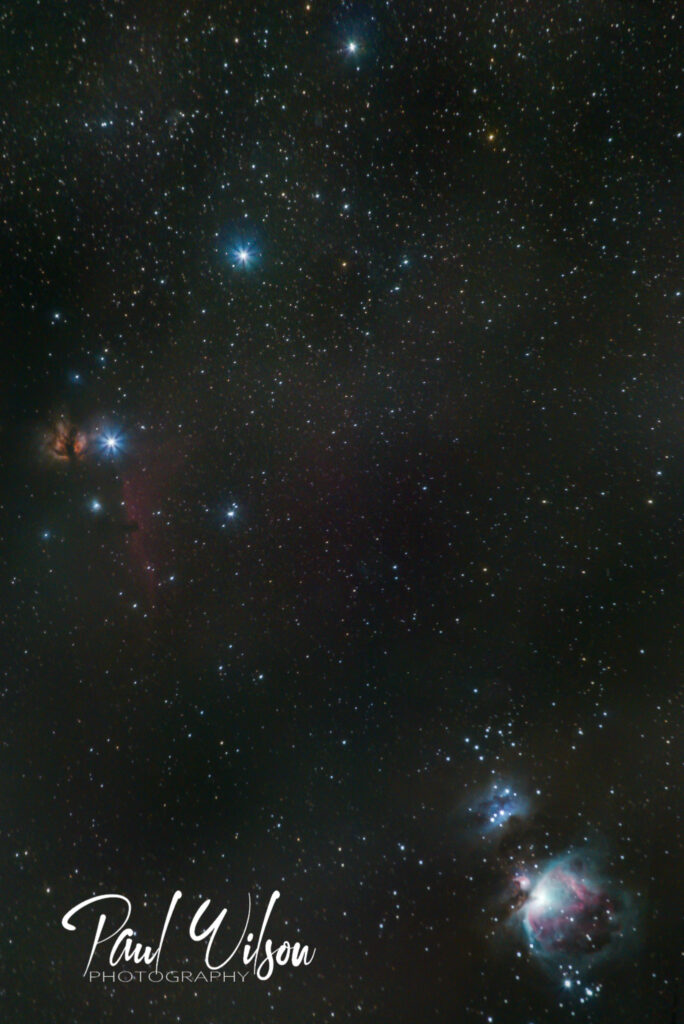
Back to the Bedroom Window!
10 November 2023Autumn and Winter means that great targets are back in the evening Southern sky – which is right outside my bedroom window!
There are pros and cons to this method of shooting – my solution for mounting the tracker and camera on the window sill is a bit ‘Heath Robinson’ and I’m sure many other Astrophotographers would tut-tut and tell me it’s sure to fail, but both last year and now this, I’ve managed to achieve some decent shots.
On the plus side, it means a pretty comfortable evening’s shoot – everything indoors, no regular trips outside to check on progress (no treading on snails and slugs) and the kit all stays pretty dry compared to a cold outside shoot when it all gets very wet. Being upstairs also means I can target objects above the trees a bit earlier.
The negatives are the setup IS a little less stable and of course my bedroom ends up really cold! But it soon warms up again once the window is shut. Also, once the target goes beyond the open window pane, shooting has to stop, when outside it might be possible to get another hours or so in.
So, with an uexpected clear sky a few nights ago (current UK weather is very wet!) I was not feeling enthusiastic about setting up outside, so I decided to concentrate on Orion (a bit of a favourite) and get a wider (or actually more upright) composition of the three brightest stars and the lower ‘sword’.
If you are just starting out in Astro’, Orion is a subject you should attempt. You can easily get some good images, even with basic kit, shortish exposure and minimum processing. This first image is just ONE tracked frame – 60secs, 70mm, f/5.6, ISO400. The only processing is a slight tweak of contrast in Lightroom.

You can already see the Great Orion Nebula (M42) in the bottom left; there’s even some colour already coming through. Just above it, the Running Man (NGC1977) is nearly visible and to the left of the brightest star Alnitak (mid-left of frame), you can just make out the Flame Nebula (NGC 2024). You can’t quite see the Horsehead (Barnard33) below Alnitak.
TIP:
Whatever sized lens you have, you can get a good composition of Orion. If all you have is a 18-55 kit lens, try it at 55mm – you’ll get a composition something like this one. Or if you have a longer zoom (200mm etc) target an individual part of the unmistakable Orion constellation.
To be honest, I could have got a slightly better shot with my 50mm lens, or gone for something like 60mm on my wide zoom. But I chose to use the shortest length on my 70-200mm more out of laziness than anything else!
The final image was the result of around 2.5 hours of 60second exposures, stacked with 70 calibration frames then procesed in Photoshop and Lightroom. This image is slightly cropped from the single shot above.

Anyway, I was really pleased with the result. The Horsehead is just about visible (more exposure would have brought it out better), but for a fairly quick setup and a less than three hours exposure, the image shows the main nebulae nicely and has some decent colour.
